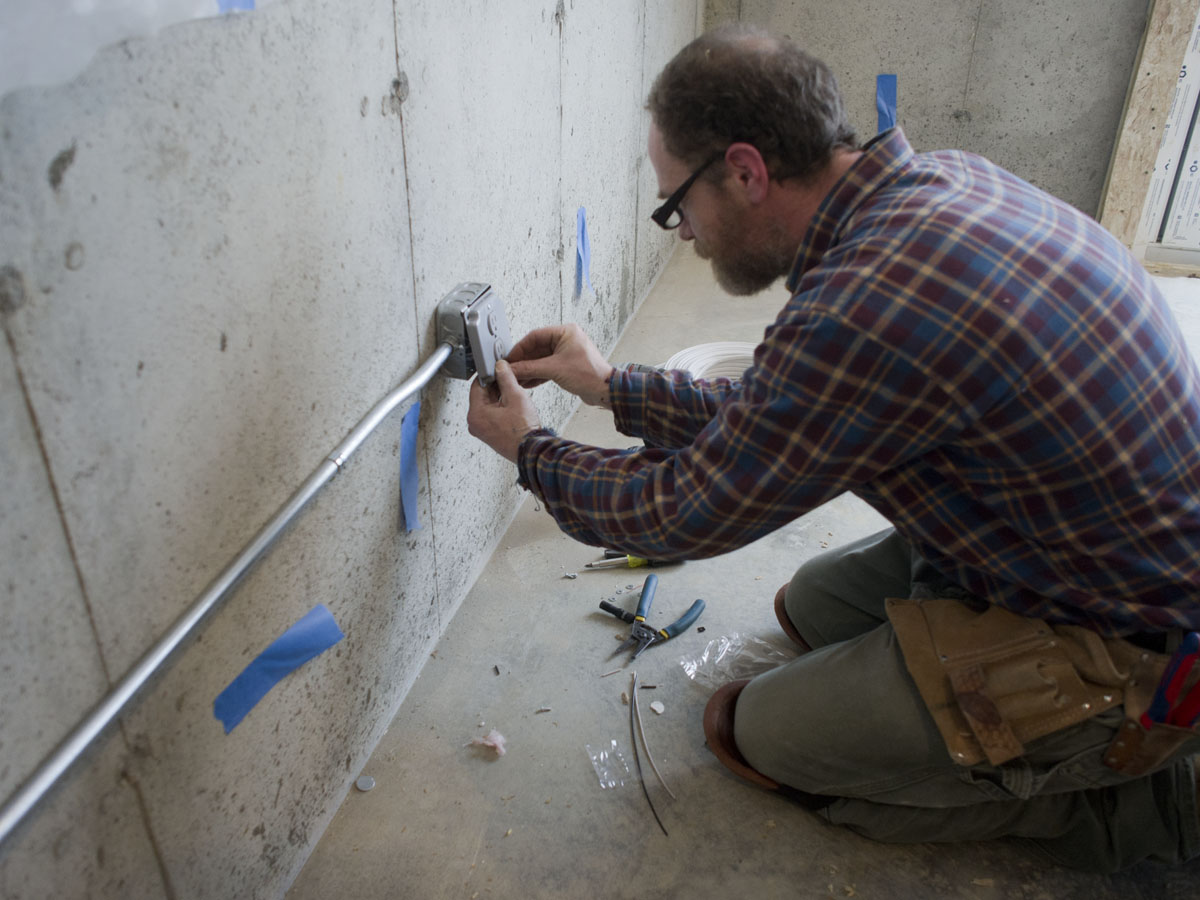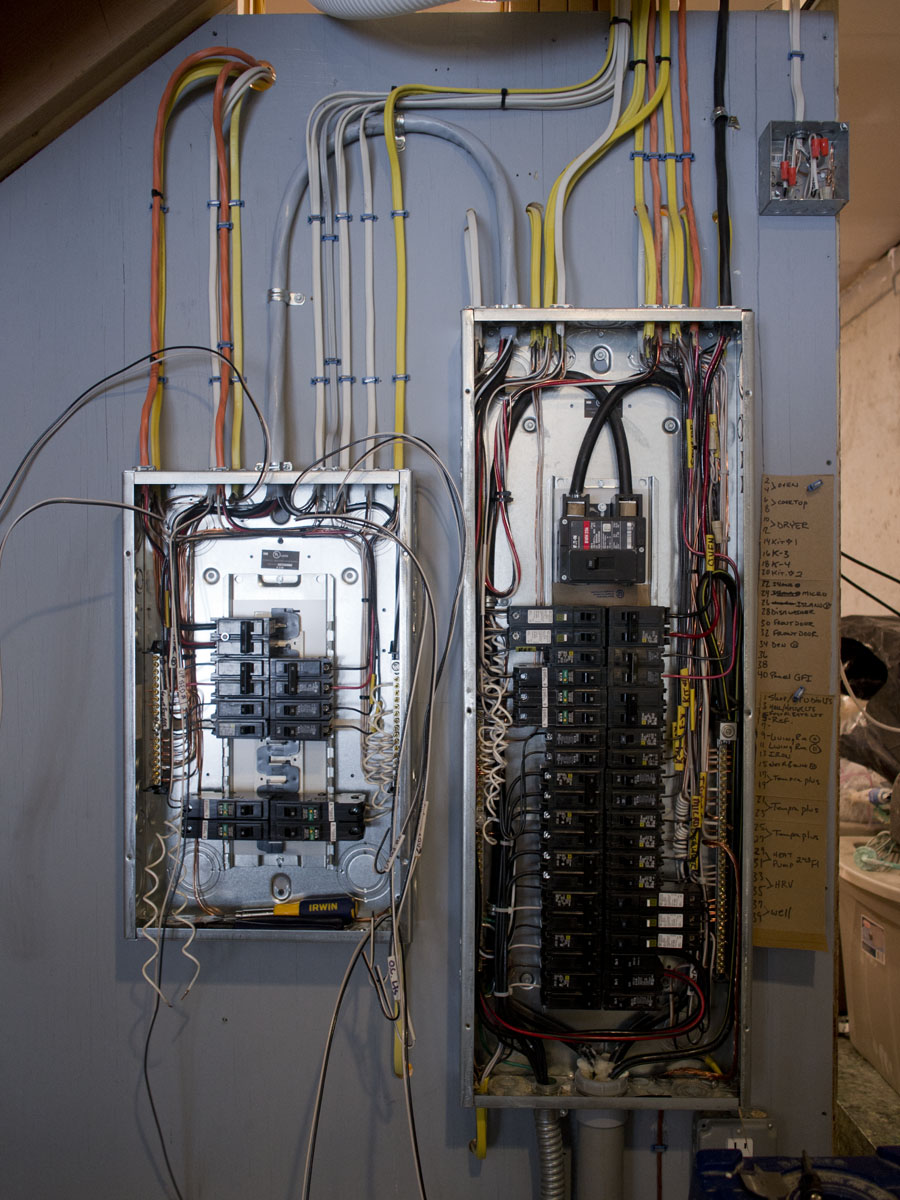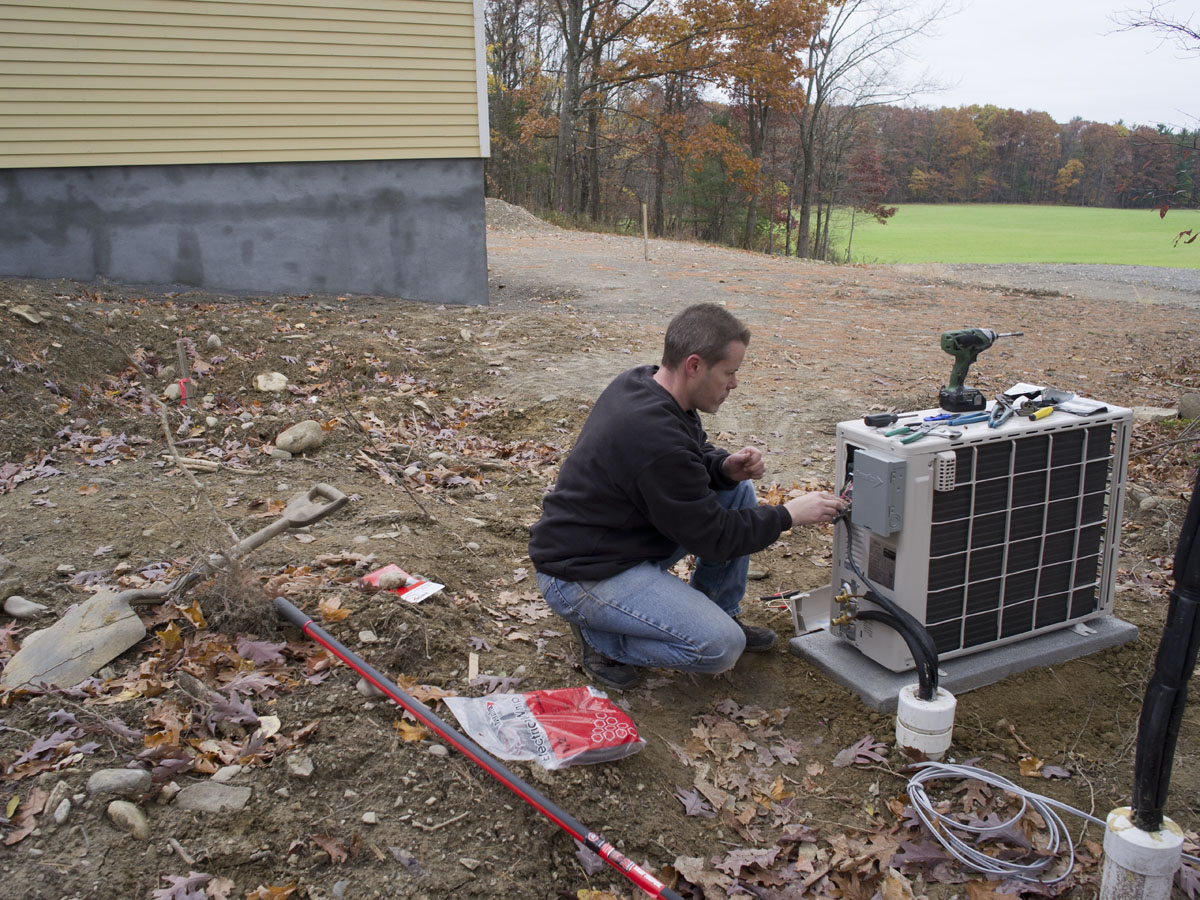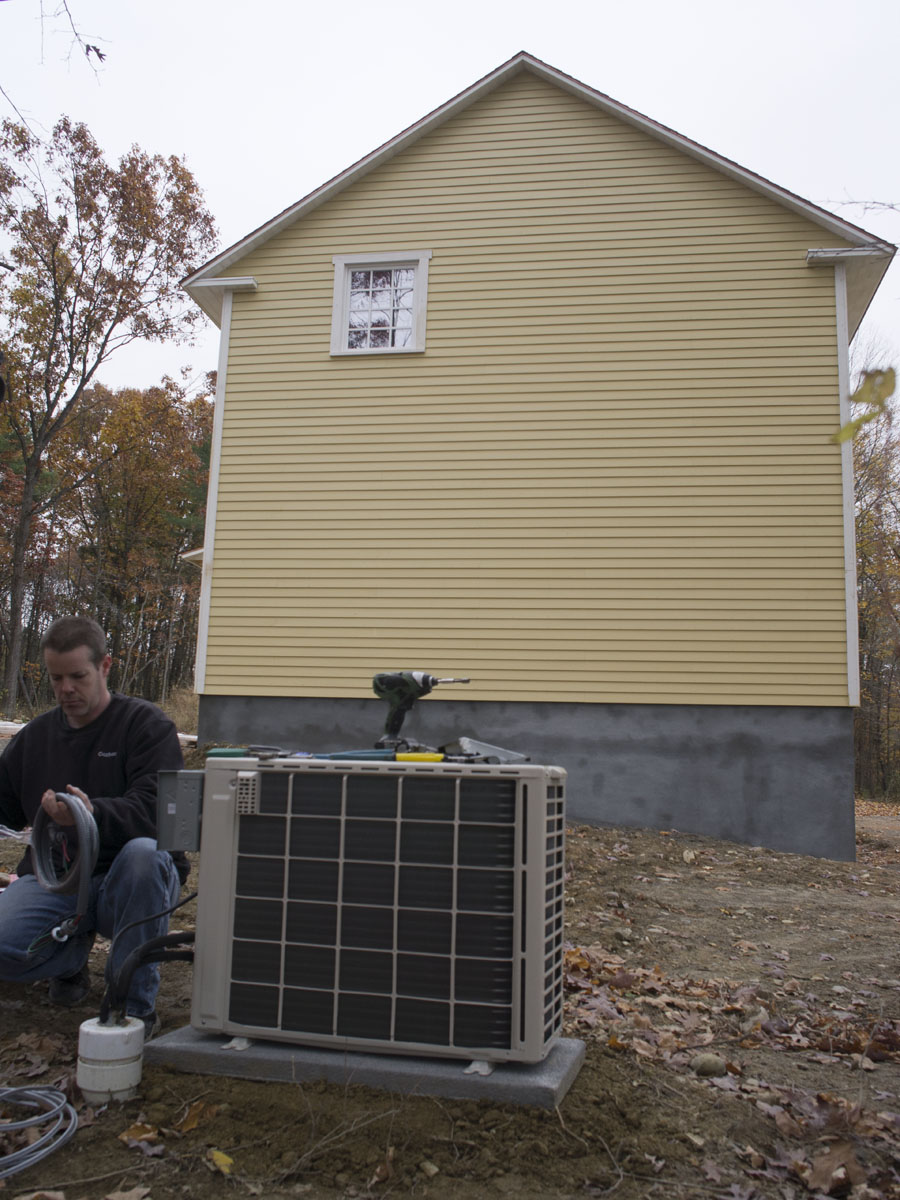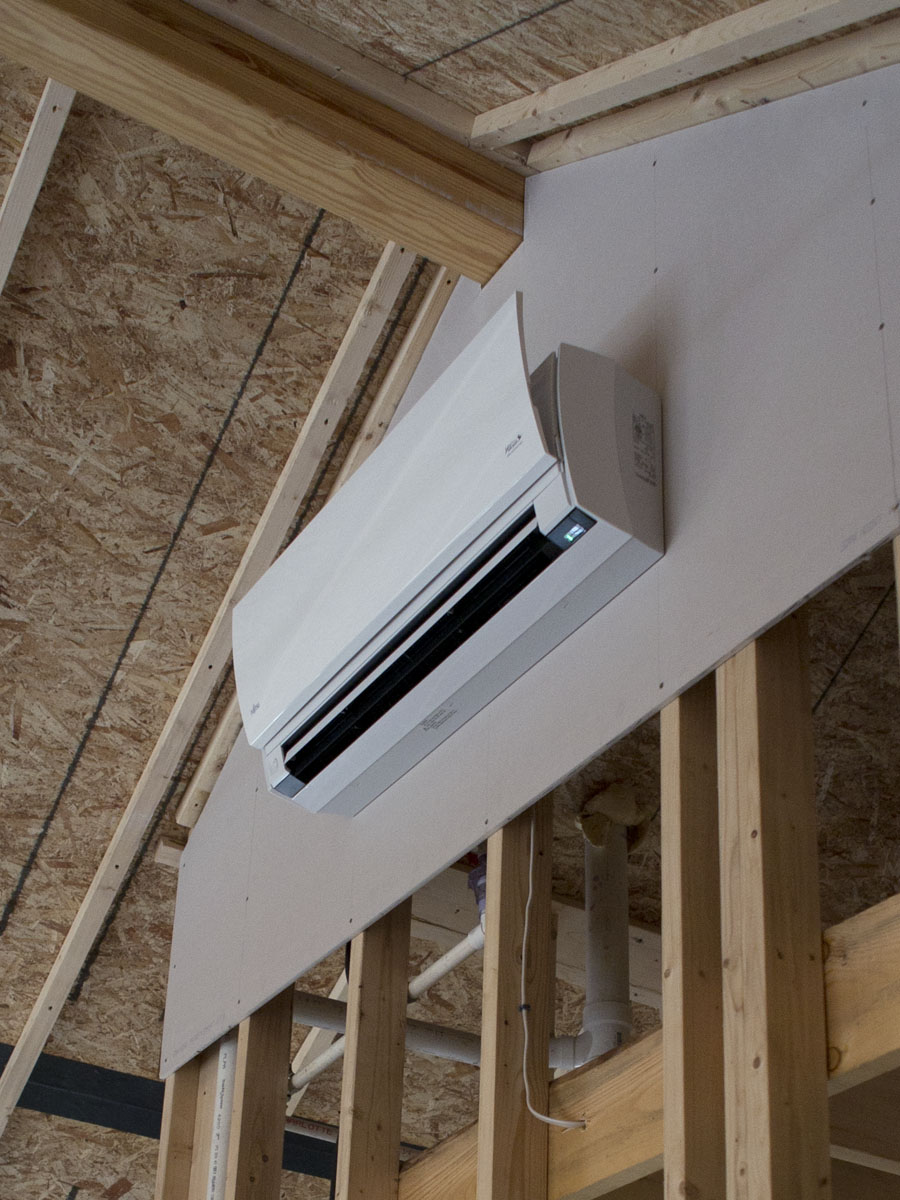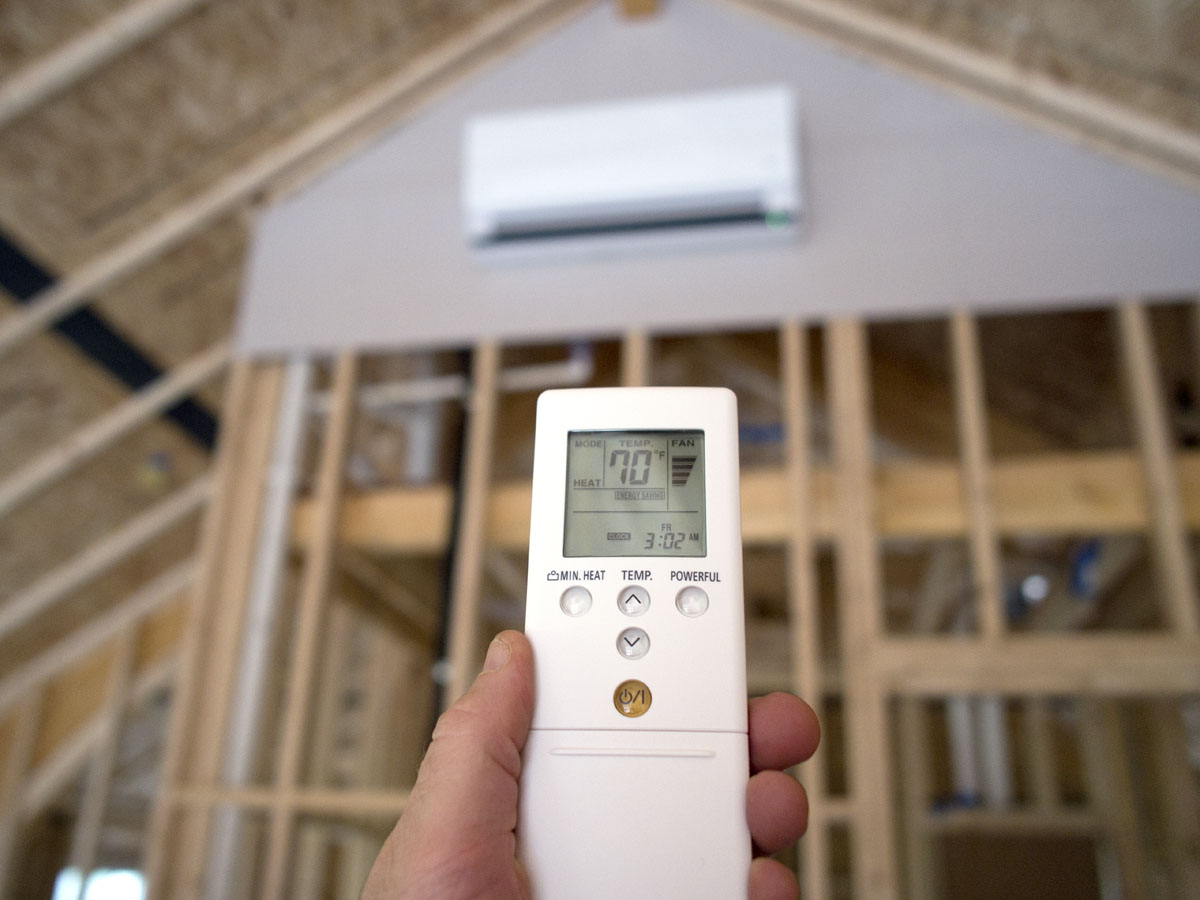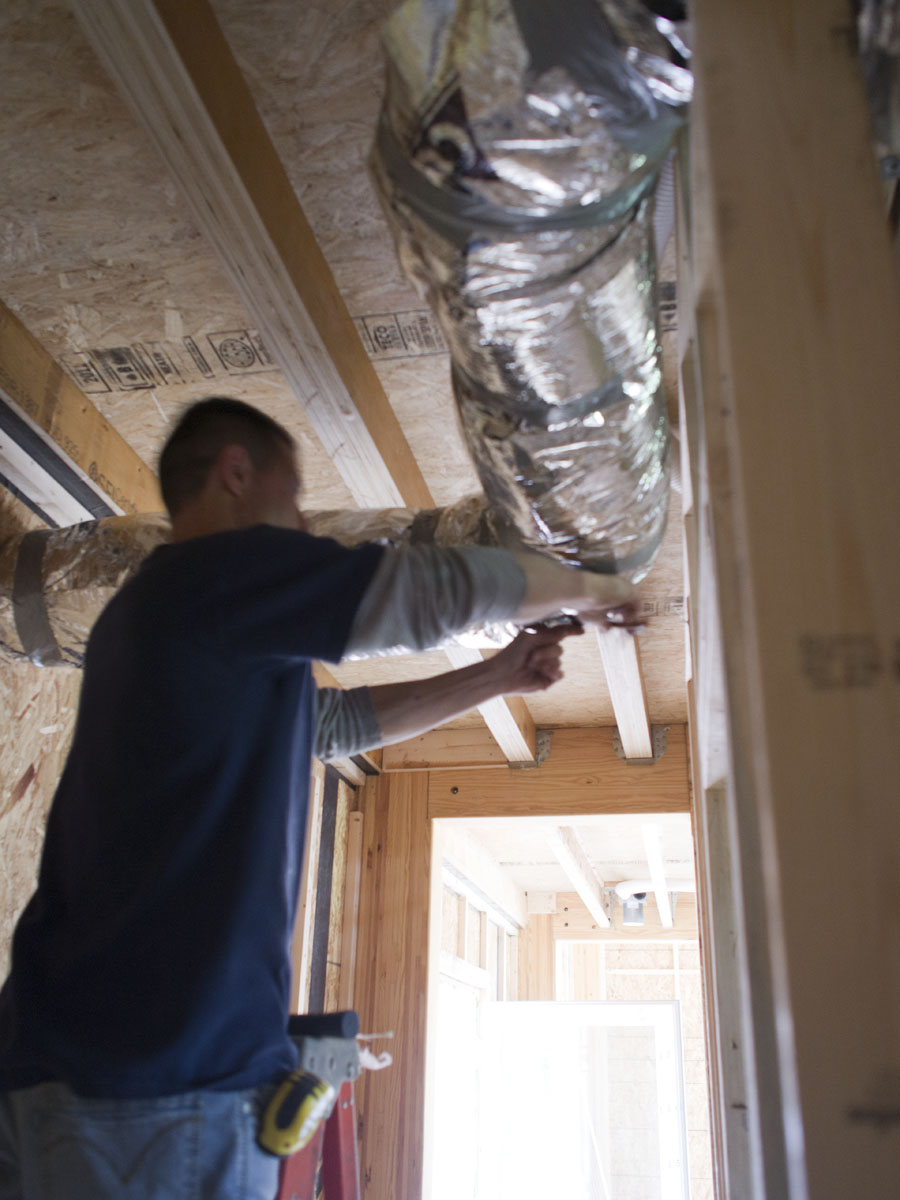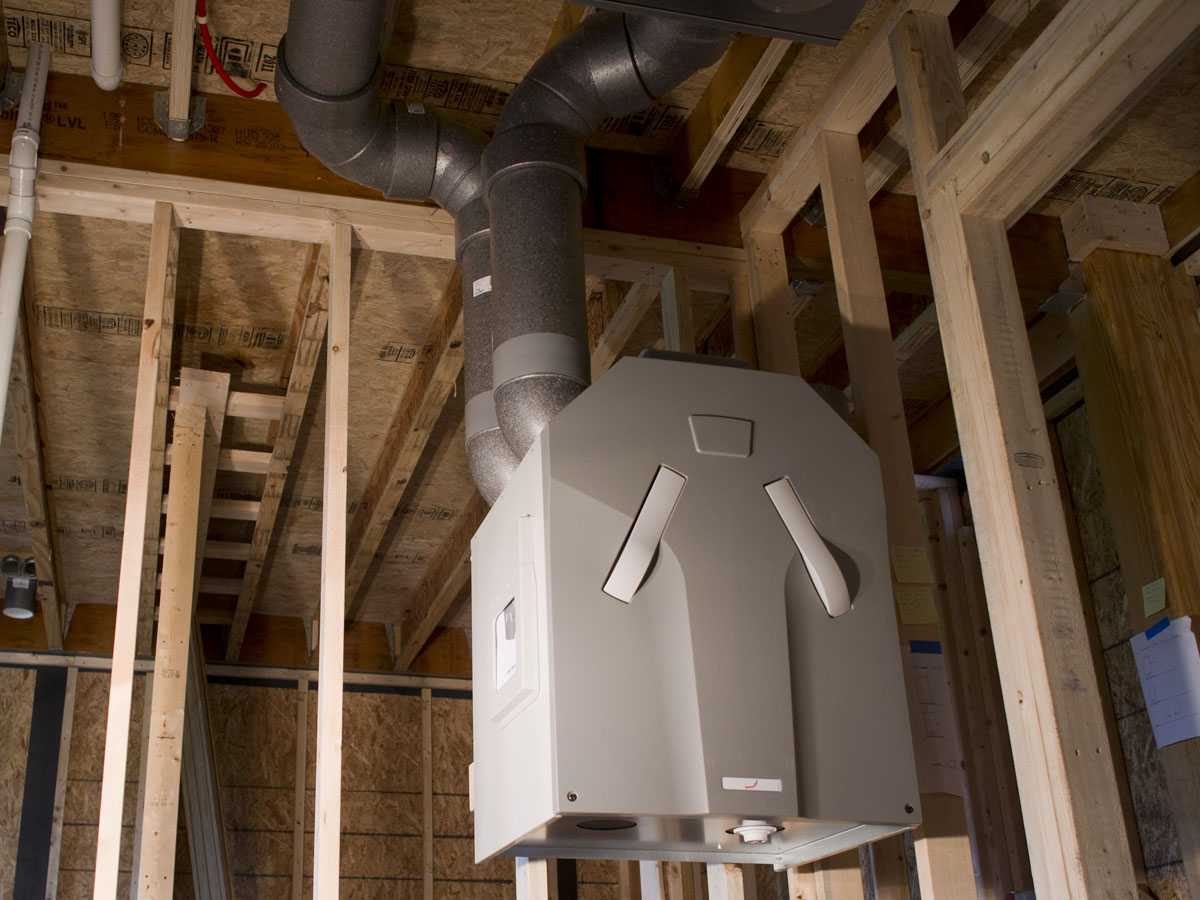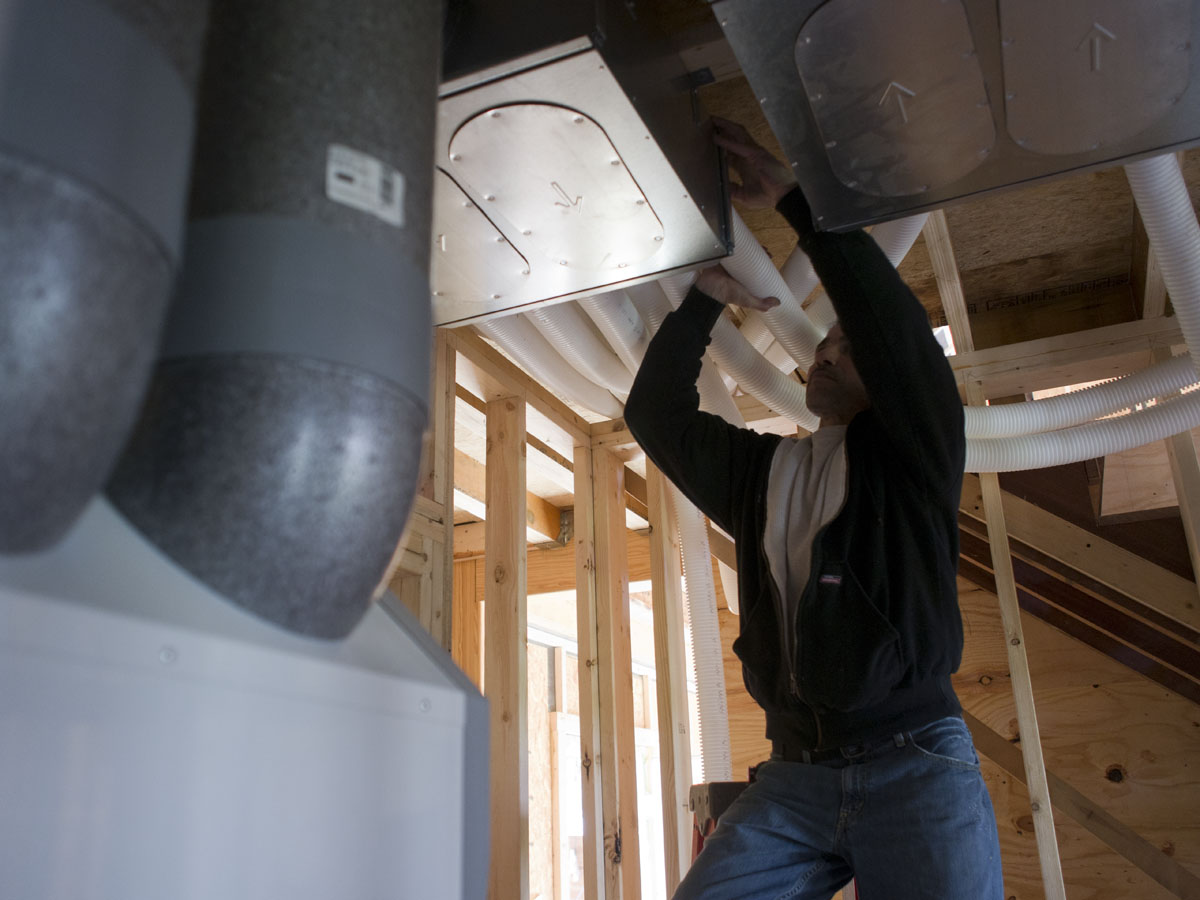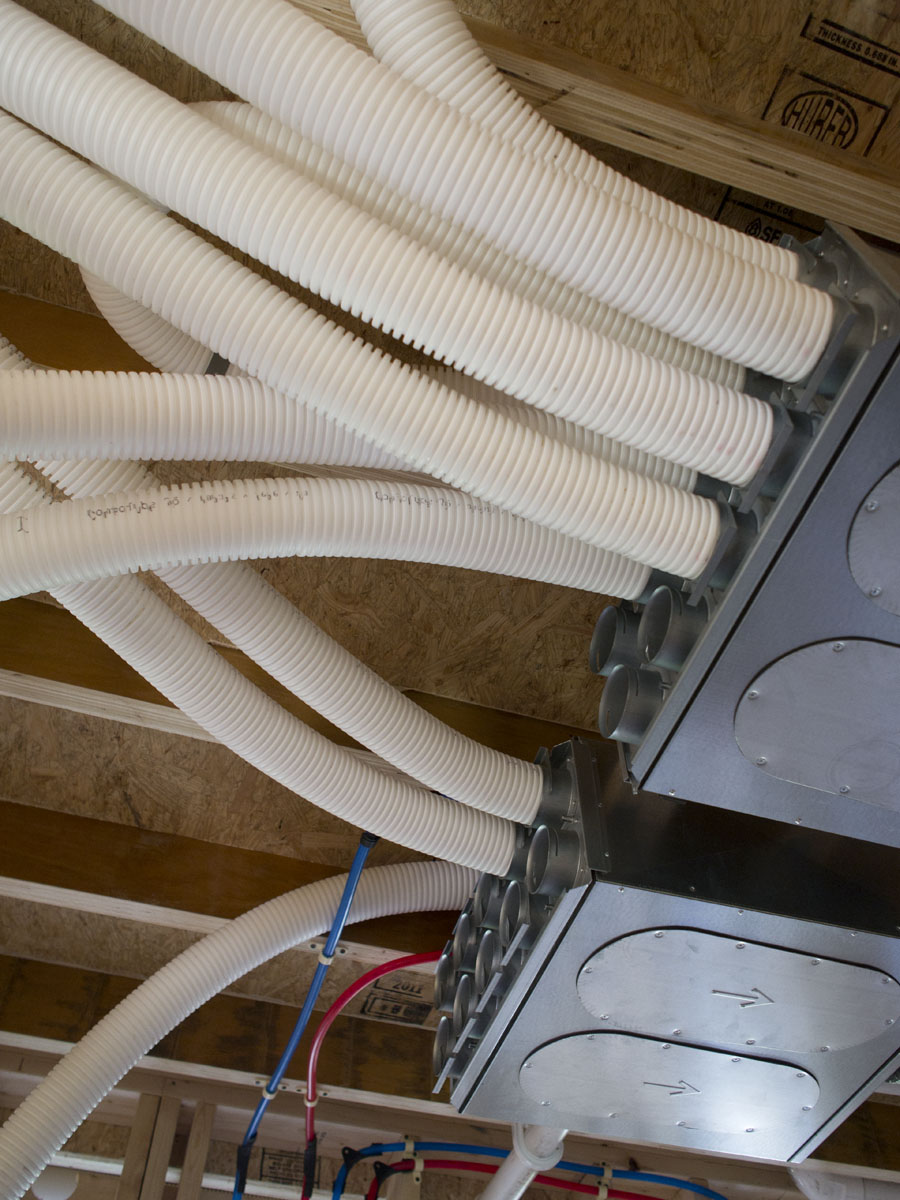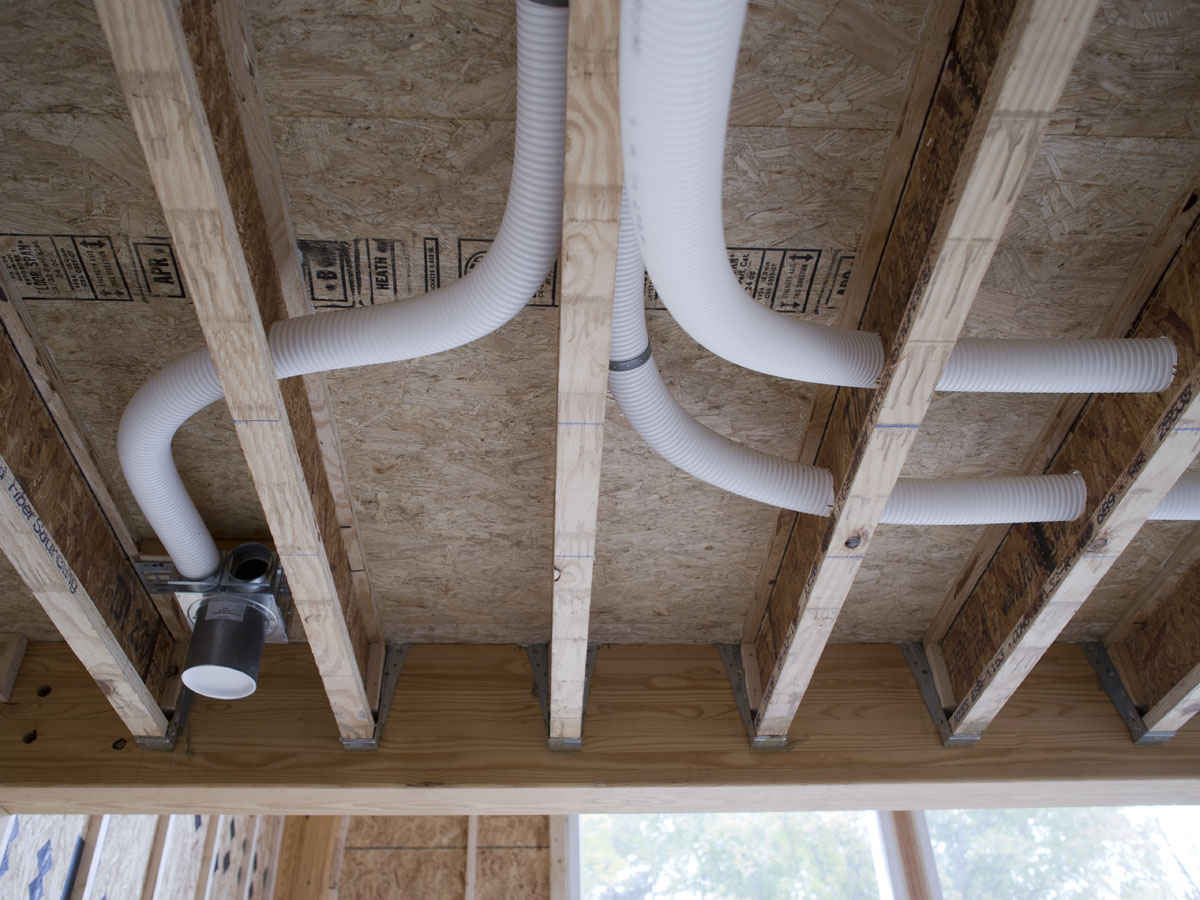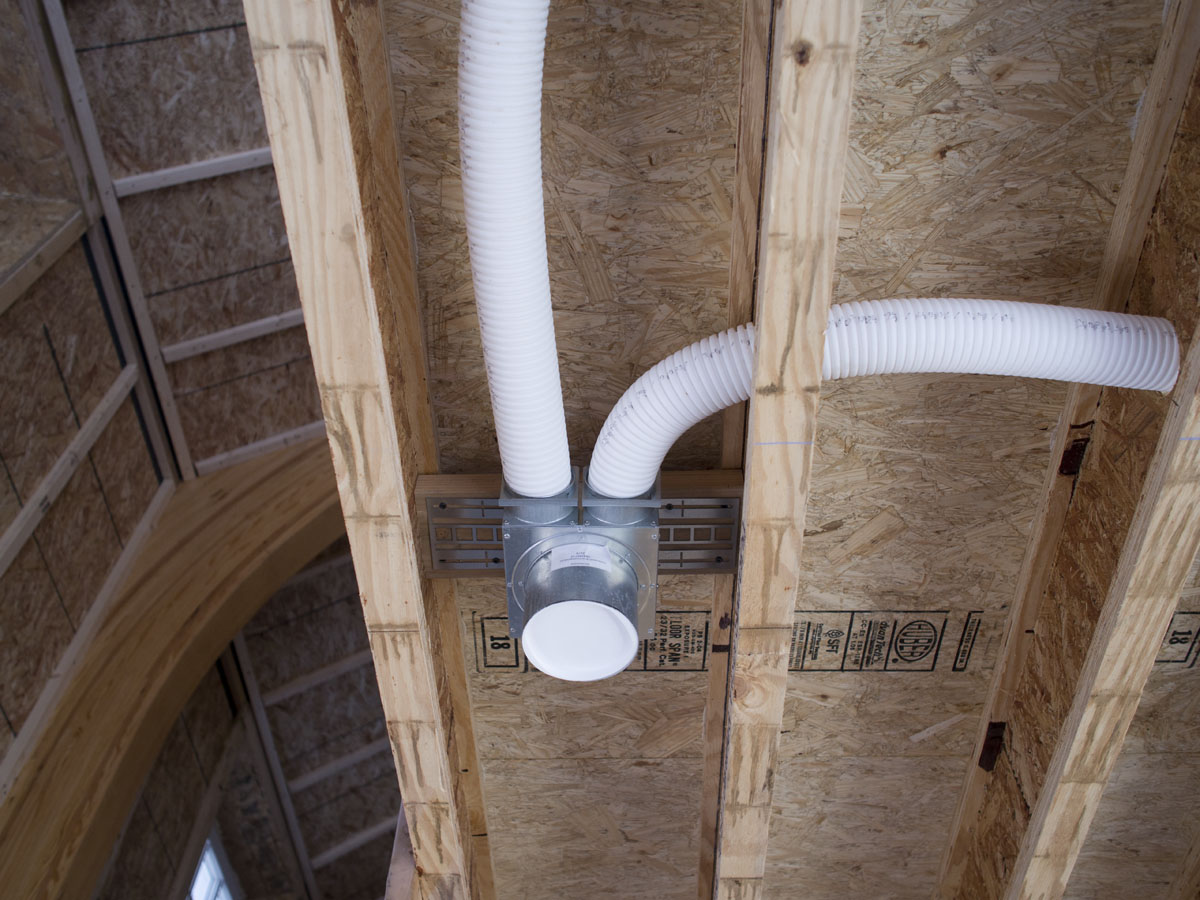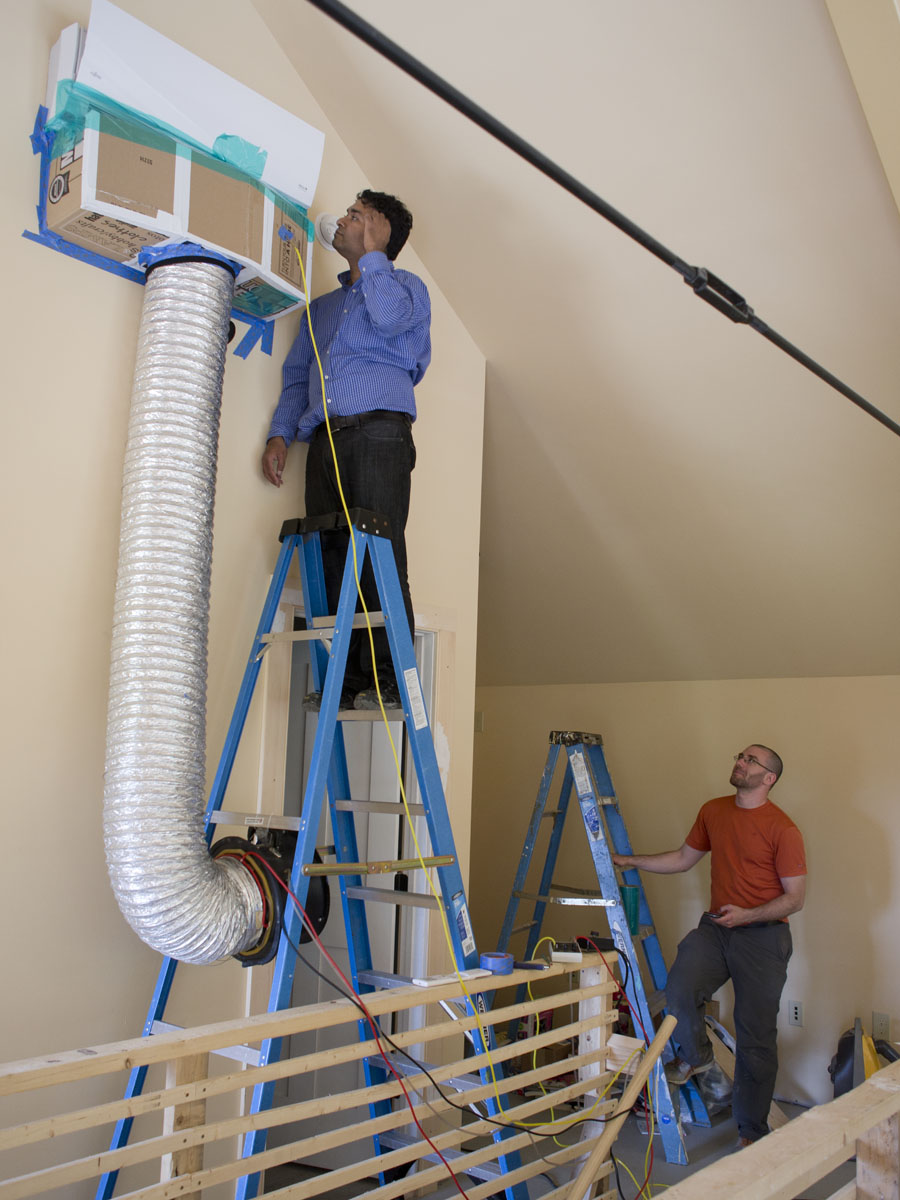
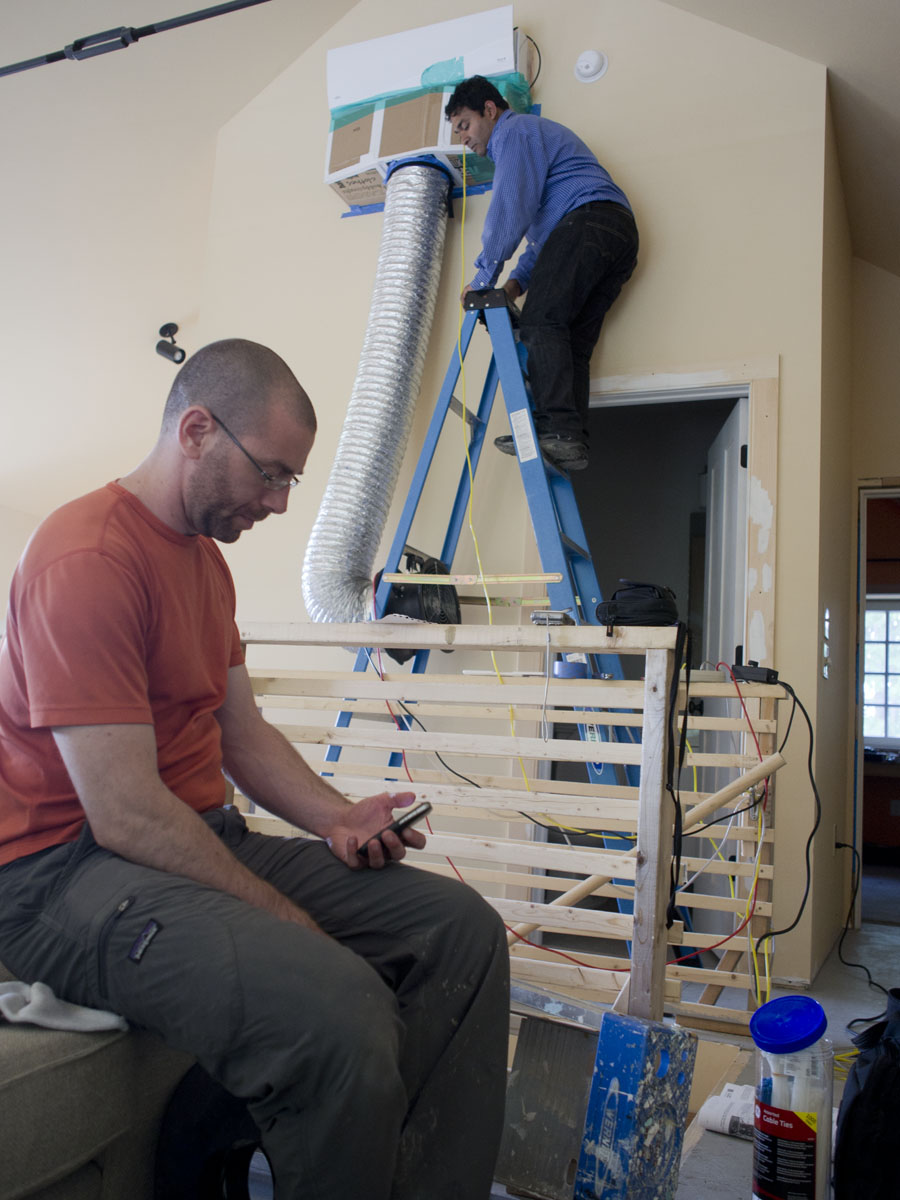 Kapil and Dave from the Levy partnership have returned to gather performance information on our heat pump.
Kapil and Dave from the Levy partnership have returned to gather performance information on our heat pump.
Category Archives: Mechanicals
We passed the test at 0.3 ACH

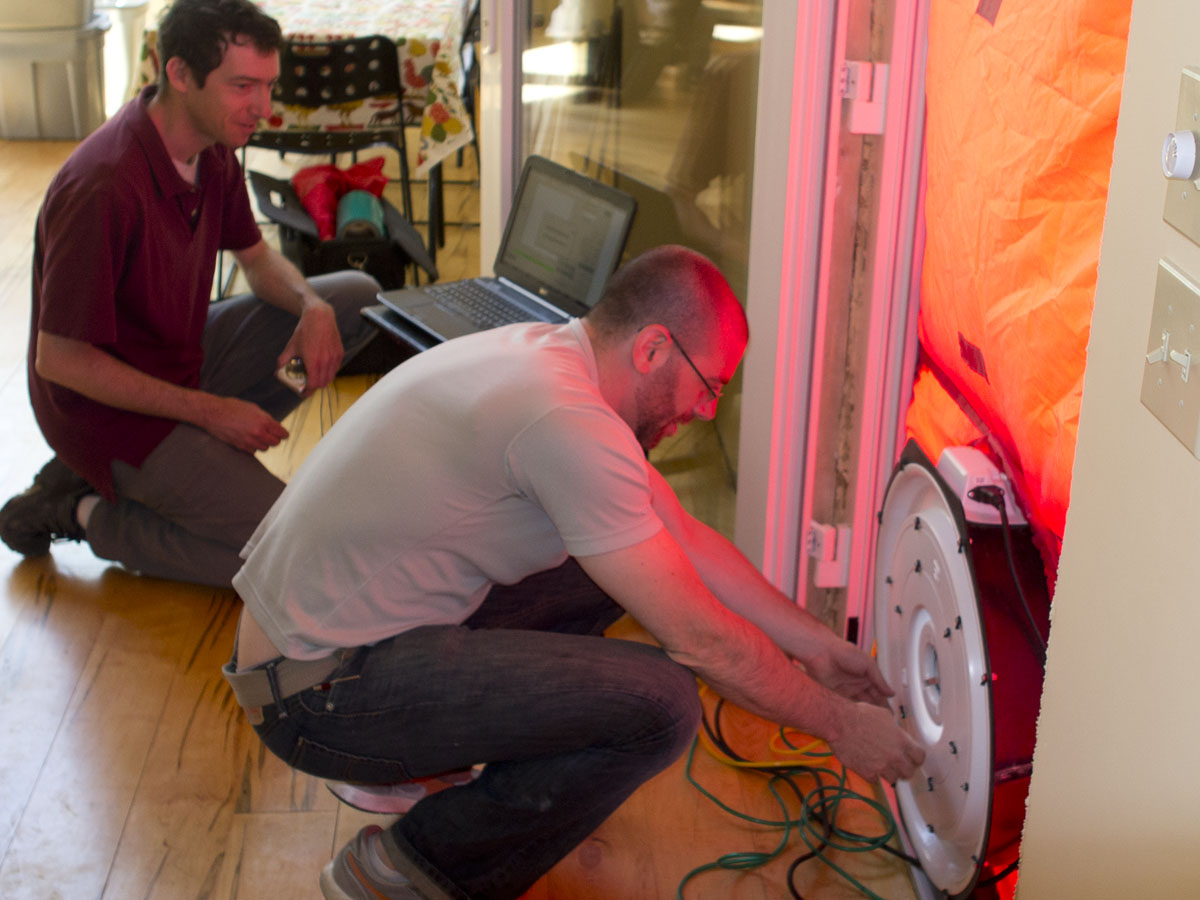

 Jordan Dentz and Dave from The Levy Partnership, along with Greg Pedrick and Nathan Russell from NYSERDA, monitor our final blower door test for Passive House certification. Read more about blower door tests here and here.
Jordan Dentz and Dave from The Levy Partnership, along with Greg Pedrick and Nathan Russell from NYSERDA, monitor our final blower door test for Passive House certification. Read more about blower door tests here and here.
Tuesday, May 7, 2013: The house was filled with brainy building science and energy experts from The Levy Partnership, NYSERDA Building R&D and CDH Energy. One team performed the blower door test, which scored 0.3 air changes per hour (ACH), exceeding the Passive House standard of 0.6 ACH. Another team set up the equipment that will monitor our energy use for the next year.
The blower door test is the key to certification. We are applying through the Passive House Academy, which is accredited by the Passivhaus Institut to provide a global Passive House Certification service.
The whole Passive House movement (that’s Passivhaus in German) is quite new here in the United States, so we volunteered to be energy Guinea Pigs and now there are little black boxes on the walls and wires sticking out of the heat pump. The data will address a number of research questions: How much energy does a Passive House use and how does that compare to homes built to current building code? How do the predictions about energy use made by the planning software compare to real life? Do the mini-split heat pumps and HRV perform like they are supposed to?
A grant from the NYSERDA High Performance Development Challenge is what brought all of this expertise to our particular Passive House, thanks to previous experience at the Barlis Wedlick project in nearby Claverak. While entire walls can be purchased ready-made in Europe that meet the Passive House standard, it’s not so common here, and it’s reassuring to have the experts confirm that our house is up to snuff, technically speaking.
Drilling through the foundation for exterior lights
Finishing up the electrical
Inside electrical wiring
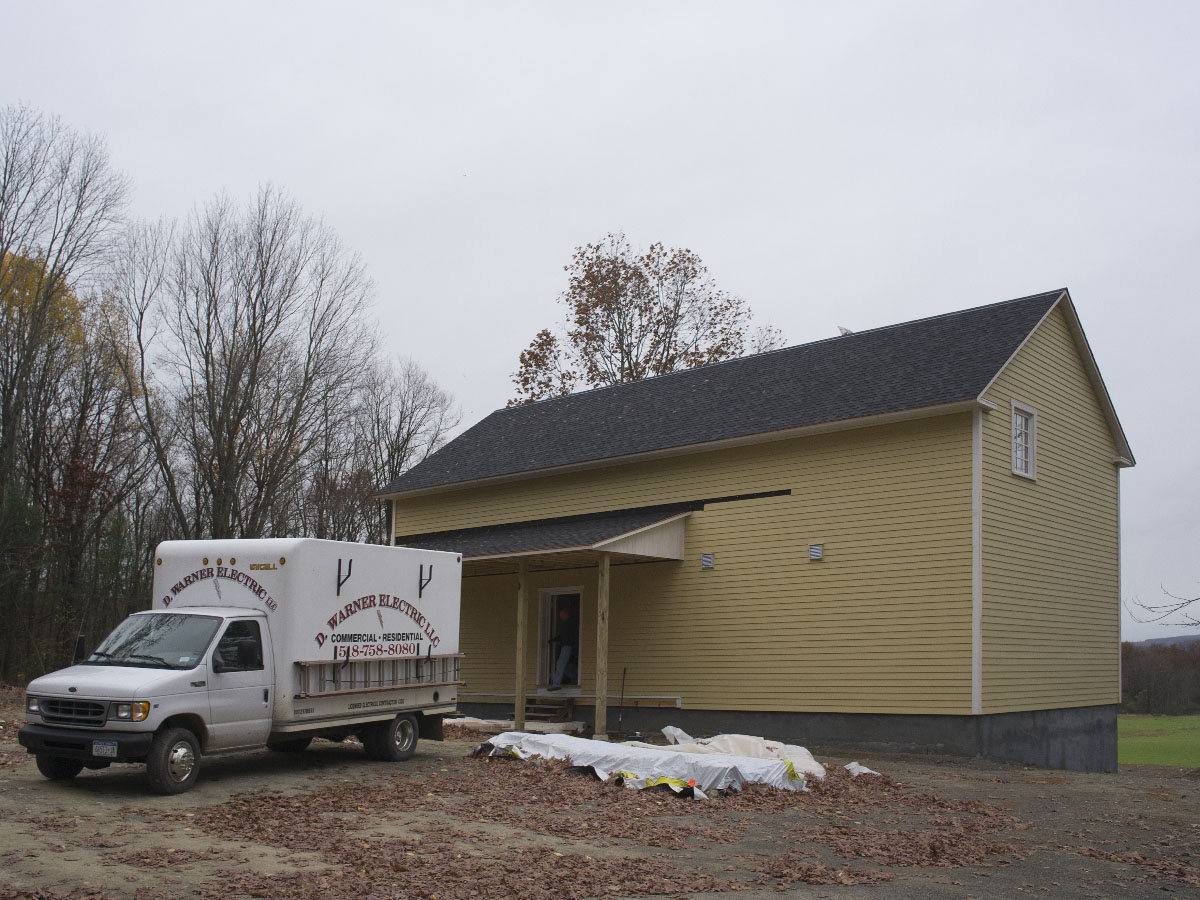
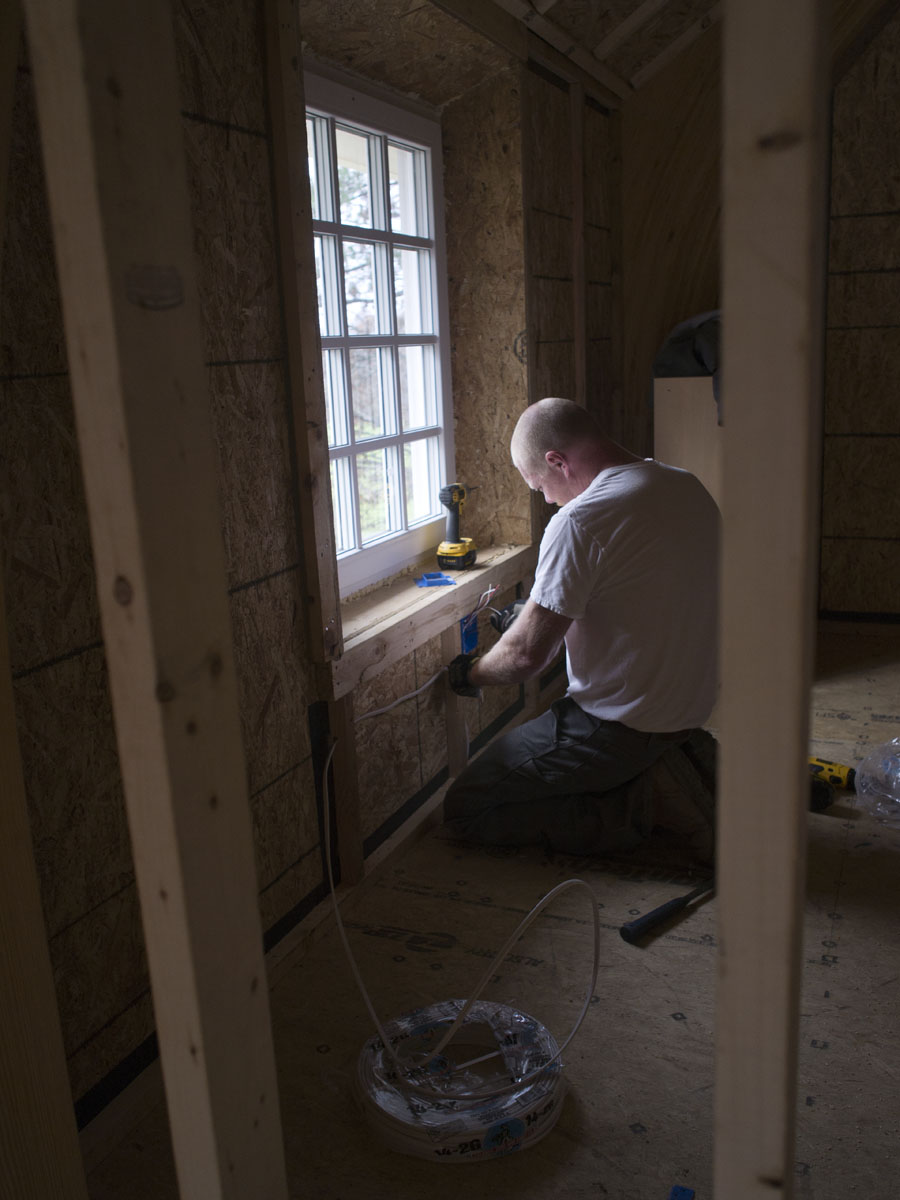
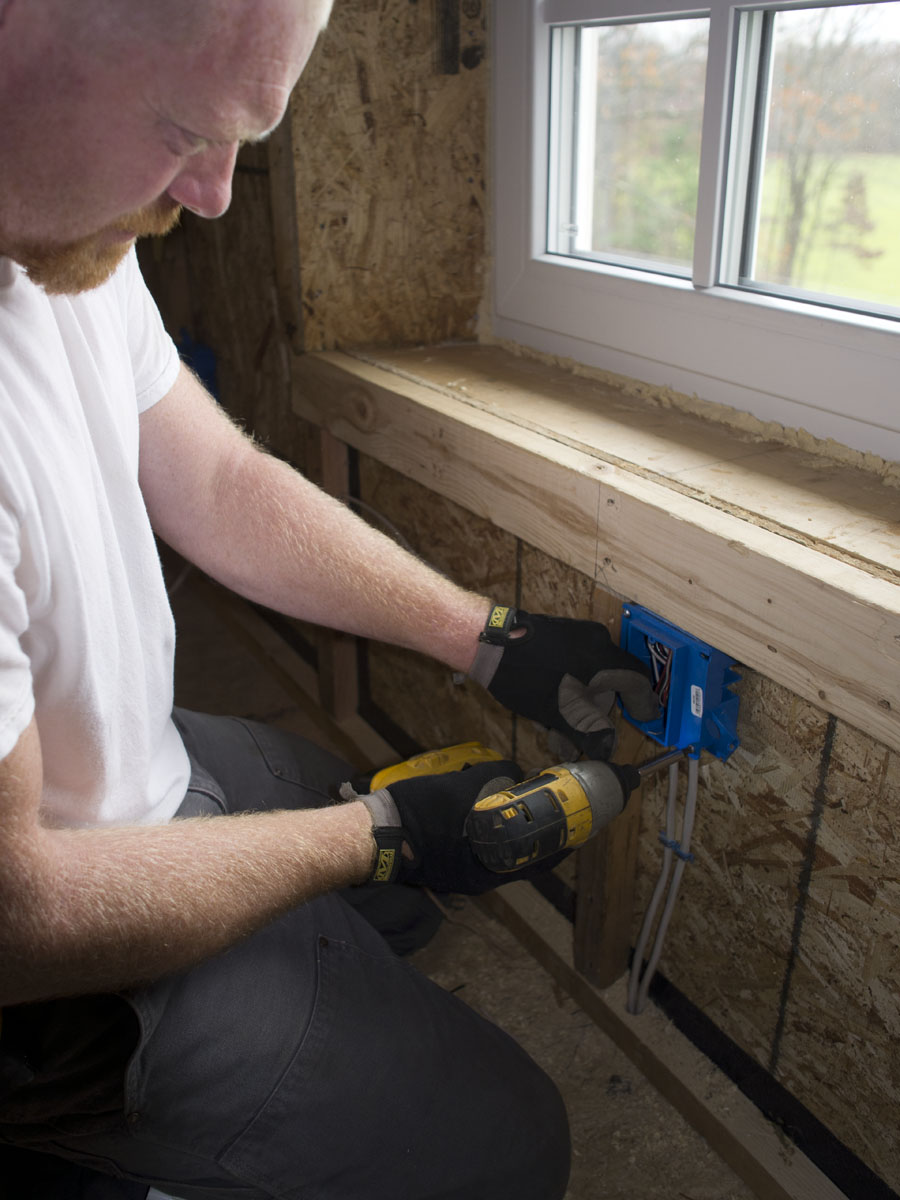
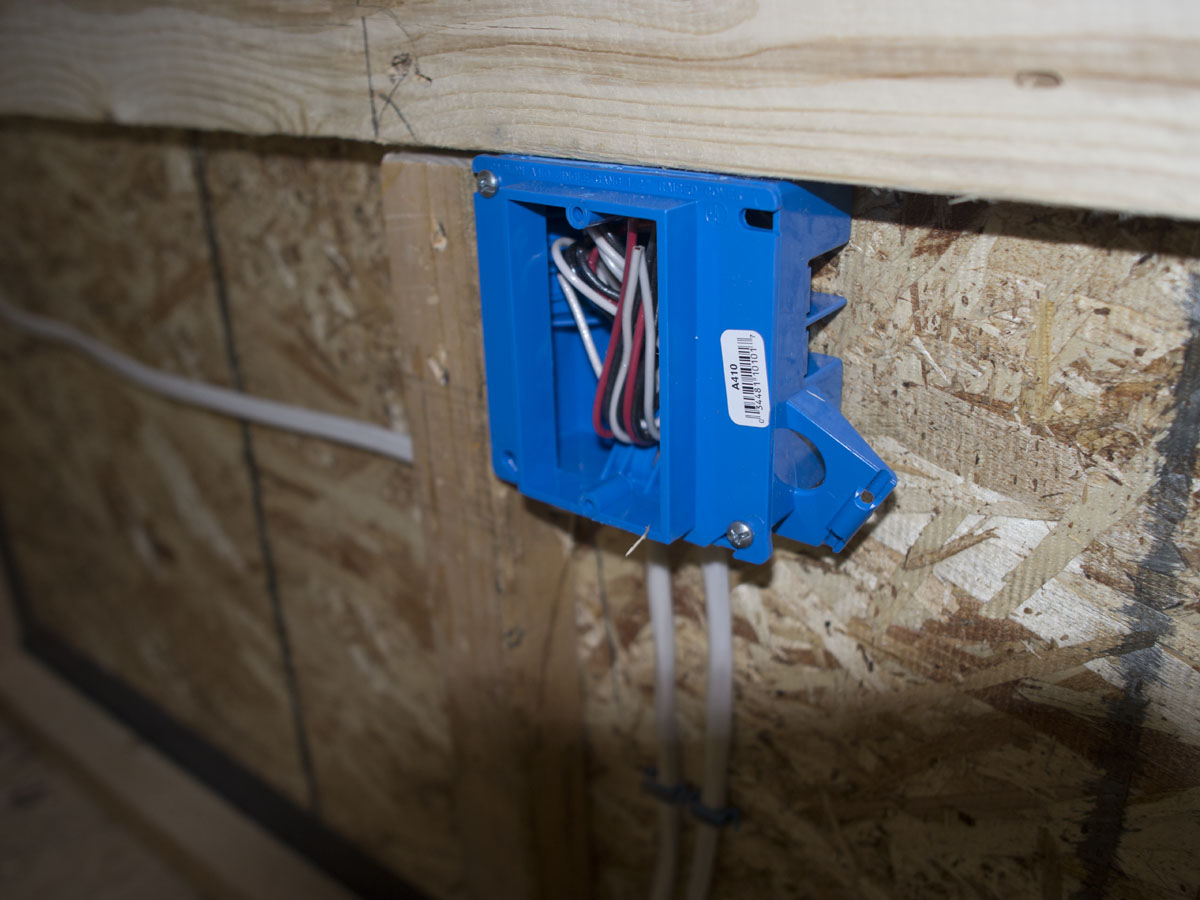 Dean Warner, electrician, returns to install more interior wiring and keep an eye on the deer walking past in the field. Fixtures are attached to the one-and-a-half-inch furring strips attached to the SIPs panels. In the next week or so, this will all be covered by drywall / sheetrock. This approach is easier than creating chases within the rigid foam to run wiring, or hiding it in a fat baseboard, which are alternatives when working with SIPs.
Dean Warner, electrician, returns to install more interior wiring and keep an eye on the deer walking past in the field. Fixtures are attached to the one-and-a-half-inch furring strips attached to the SIPs panels. In the next week or so, this will all be covered by drywall / sheetrock. This approach is easier than creating chases within the rigid foam to run wiring, or hiding it in a fat baseboard, which are alternatives when working with SIPs.





